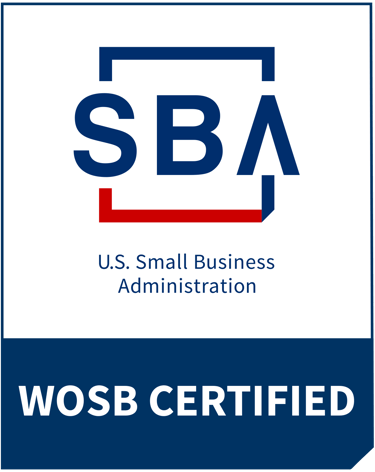Register for my upcoming Build an AI Content Team: Elevate Your Writing, Scale Your Impact course on Maven
Don’t just wrap up—level up: use AI to turn chaos into strategic clarity
11/26/20253 min read


Welcome to Prompt, Tinker, Innovate—my AI playground. Each edition gives you a hands-on experiment that shows how AI isn’t just helpful, it can sharpen your thinking, streamline your process, and power up your creative work.
As we close the year, the pressure’s on: campaign retros, event summaries, quarterly reviews. You’re expected to synthesize mountains of scattered input—emails, surveys, Slack threads—into one clean, strategic narrative. That’s exhausting. And worse? Most wrap-up reports are just status updates.
Let’s change that.
This week’s playground: turning messy inputs into strategic narratives
We often delay wrap-up reports because they take a long time to pull together given the data is everywhere: the hard numbers in a spreadsheet, the "vibe check" in your head, team feedback buried in email threads, and customer feedback in surveys.
When we finally write the report, we usually just list what happened. But great wrap-ups don’t just say what happened. They reveal what mattered—and what should change. They capture the wins, the warning signs, and the "why" behind it all.
AI is exceptionally good at pulling these threads together to answer not just "what happened?" but "so what?"
Use case spotlight: Event sponsorship wrap up report
Let’s take a common scenario—an event wrap-up. Most reports look like this: "We attended TechSummit, scanned 850 attendees, and gave away 500 t-shirts." Forgettable. Learned (almost) nothing.
A strategic report digs deeper. It captures:
The numbers:
Attendees scanned: 850
MQLs generated: 120
Booth rating: 9/10
The vibe (team pulse + culture wins):
Team sentiment: Sales credited the engineering team for speeding up complex demos.
Customer voice: “Your demo solved our 6-month bottleneck.”
Unexpected wins: A casual happy hour led to 3 partnership deals—none of which happened on the expo floor.
Tension to watch: Repeated confusion with Competitor X shows the booth messaging isn’t landing.
Human moments: The great pizza debate and a keynote power outage somehow built team camaraderie.
The pivot (what to change next time):
Reallocate swag budget: $5K on stress balls = wasted. Put it into mixers.
Reframe the message: “Deployment solutions” is vague. “Instant rollbacks” stops confusion with Competitor X cold.
Staff smarter: Every shift needs a solutions engineer—period.
This blend of hard data, human experience, and actionable next steps is what stakeholders actually read. And AI helps surface those insights in minutes—not hours.
Your AI experiment: Try this prompt
👉 Time to tinker: Ready to turn your data and pile of notes into a polished report? Gather your raw inputs and copy and paste the prompt below into ChatGPT, Claude, or Gemini. Inputs could be:
Bullet points or .csv file of stats (budget, attendees, sales).
Copy-pasted feedback emails from the team.
Customer feedback scores and survey responses.
Your own stream-of-consciousness notes on what went wrong.
📝 Prompt: "Act as a Senior Operations Strategist. Please write a comprehensive 'Wrap-Up Report' for [Insert Event/Campaign/Team/Year] based on the raw notes and data I have [pasted/attached] below.
Please structure the report into the following sections:
Executive summary: A high-level 3-sentence overview of the success and impact.
Key logistics: The foundational details of the initiative (dates, location, URLs, total spend, team members involved, etc.).
By the numbers: Extract the hard metrics (attendance, leads, budget, ratings, viewers, MQLs) and present them in a clear list or table.
The 'vibe check' (qualitative highlights): Synthesize the team sentiment, cultural wins, and atmosphere. Look for quotes or specific anecdotes that illustrate team cohesion or morale.
Strategic insights & friction points: Specific misunderstandings customers had (e.g., product confusion), competitive landscape observations, or logistical failures. Be honest about what didn't work.
Recommendations for next time: Actionable bullet points on what we should change (e.g., messaging, booth design, staffing) based on the feedback provided.
Adaptive data analysis: Do not limit yourself to the sections above. If the raw data contains significant themes or metrics not covered (e.g., social media performance, budget breakdown, specific project milestones), create additional sections to ensure the report gives a complete picture of the data provided.
Here is the raw context: [PASTE OR ATTACH YOUR MESSY NOTES, EMAILS, AND DATA HERE]"
💡Pro tips:
Ask for the "why": If your raw notes include a lot of complaints or praise, add this line to the prompt: "For every recommendation, explicitly state the problem it solves based on the provided feedback."
The "Slack" version: Once the AI generates the full report, follow up with: "Now, rewrite this as a punchy, 200-word summary suitable for a company-wide Slack announcement, using emojis for section headers."
What did you discover?
It’s common when we look at data in a silo or read feedback one email at a time, we miss the aggregate. AI provides another, data-savvy, set of eyes. It might find that while the numbers were low, the sentiment regarding a specific feature was overwhelmingly positive—or vice versa.
Until next time—keep tinkering, keep prompting, keep innovating.
📩 Not subscribed yet? Hit the button at the top. You won’t want to miss what’s next.

